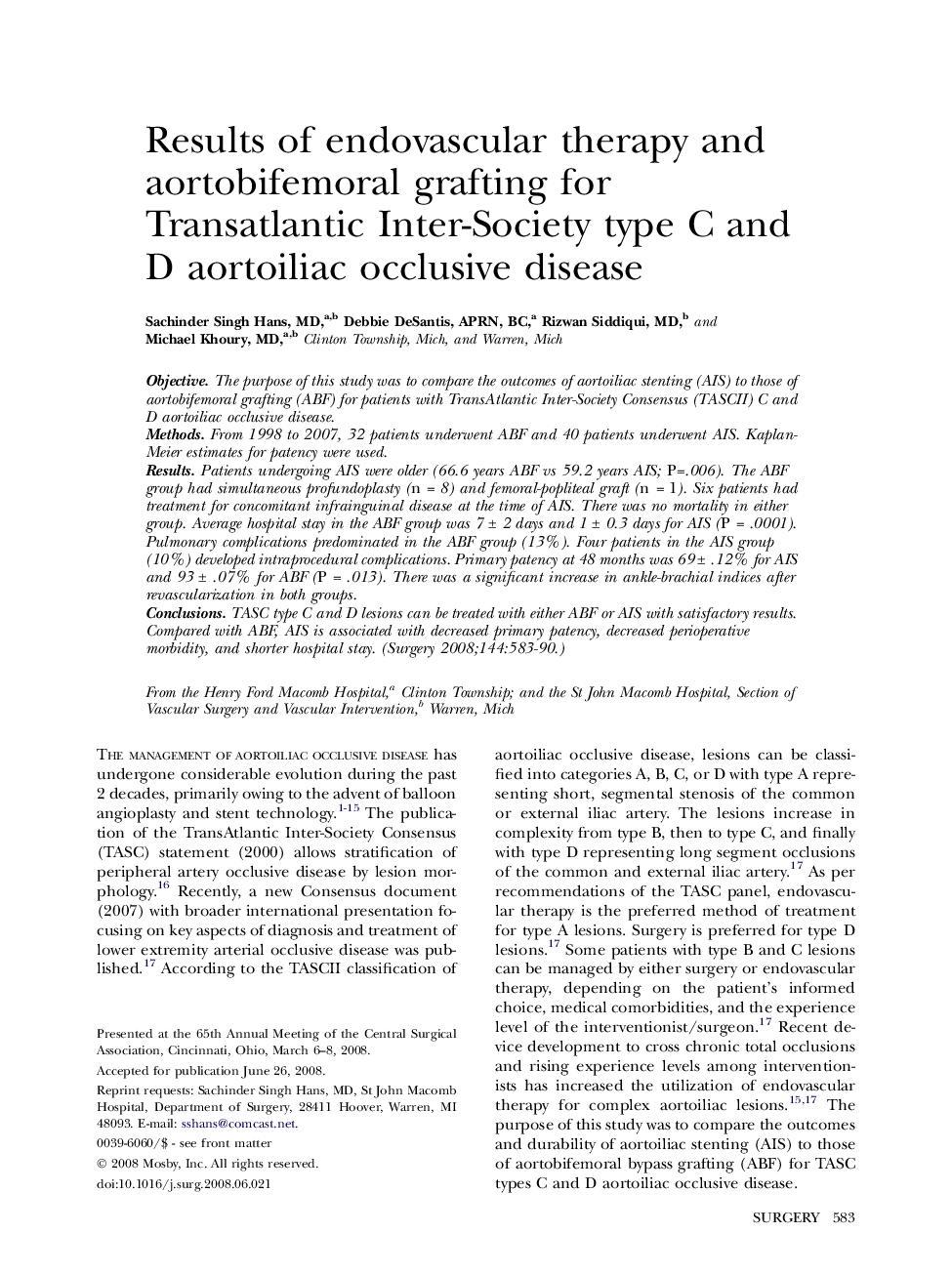| Article ID | Journal | Published Year | Pages | File Type |
|---|---|---|---|---|
| 4309790 | Surgery | 2008 | 8 Pages |
ObjectiveThe purpose of this study was to compare the outcomes of aortoiliac stenting (AIS) to those of aortobifemoral grafting (ABF) for patients with TransAtlantic Inter-Society Consensus (TASCII) C and D aortoiliac occlusive disease.MethodsFrom 1998 to 2007, 32 patients underwent ABF and 40 patients underwent AIS. Kaplan-Meier estimates for patency were used.ResultsPatients undergoing AIS were older (66.6 years ABF vs 59.2 years AIS; P=.006). The ABF group had simultaneous profundoplasty (n = 8) and femoral-popliteal graft (n = 1). Six patients had treatment for concomitant infrainguinal disease at the time of AIS. There was no mortality in either group. Average hospital stay in the ABF group was 7 ± 2 days and 1 ± 0.3 days for AIS (P = .0001). Pulmonary complications predominated in the ABF group (13%). Four patients in the AIS group (10%) developed intraprocedural complications. Primary patency at 48 months was 69 ± .12% for AIS and 93 ± .07% for ABF (P = .013). There was a significant increase in ankle-brachial indices after revascularization in both groups.ConclusionsTASC type C and D lesions can be treated with either ABF or AIS with satisfactory results. Compared with ABF, AIS is associated with decreased primary patency, decreased perioperative morbidity, and shorter hospital stay.
